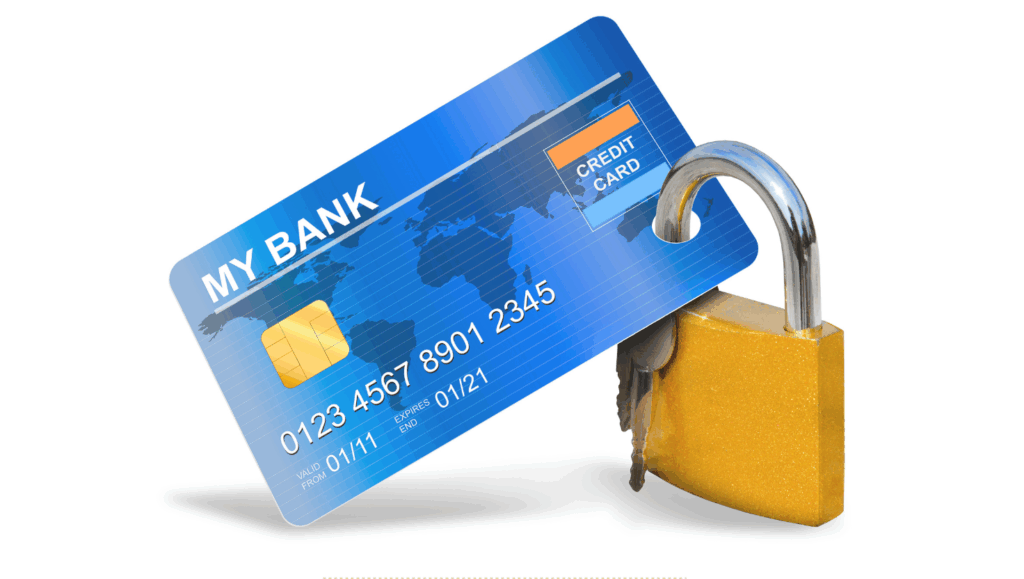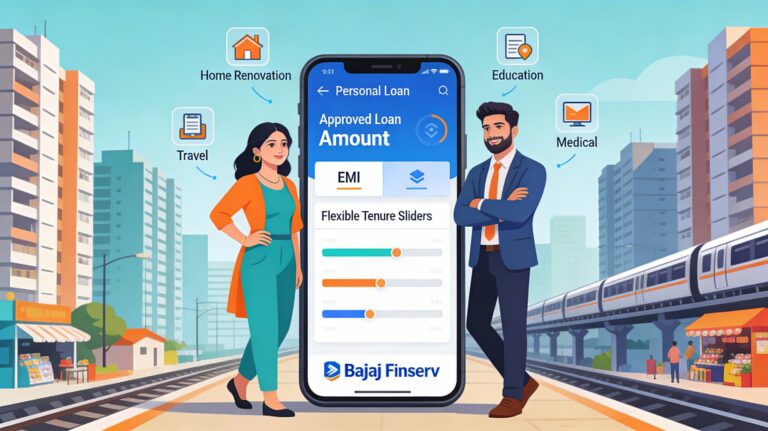
Cash Credit (CC) and Overdraft (OD) battle for supremacy! With MSMEs driving 30% of GDP and startups soaring, which credit line—CC’s 9–14% collateral-backed power or OD’s flexible 11–18% instant access—will fuel your dreams? Unravel their secrets, from digital banking innovations to government schemes like CGTMSE, in this thrilling comparison. Will CC’s stability or OD’s agility win?
India’s vibrant business environment, especially post-pandemic and in the wake of rapid financial digitization, has made access to flexible credit a top priority for entrepreneurs, startups, and even salaried individuals. Among the most talked-about short-term financing tools are Cash Credit (CC) and Overdraft (OD)—two facilities often confused but fundamentally different in their operation, utility, and popularity. Let’s explore these credit lines, analyse their key features, demystify their best use cases, and settle the debate on which one stands out in 2025’s Indian market.
Understanding India’s Need for Flexible Credit
India’s economic resurgence has catalysed the demand for quick, short-term financing among Micro, Small, and Medium Enterprises (MSMEs), big businesses, and even individuals needing urgent funds. As aspiring ventures and established firms seek working capital flexibility, understanding the difference between Cash Credit and Overdraft is crucial to making informed decisions. This post delivers an in-depth, data-driven analysis tailored for Indian readers.
What is Cash Credit (CC)?
Cash Credit (CC) is a revolving, short-term loan facility mainly designed for businesses to meet their working capital needs. The bank sanctions a certain credit limit, usually backed by collateral (such as inventory or receivables), from which businesses can draw funds as required. Interest is charged only on the amount utilized, not on the credit limit.
Key Features of Cash Credit
- Targeted for Businesses: Exclusively offered to companies or firms to maintain liquidity and smooth daily operations—ideal for manufacturers, traders, and MSMEs.
- Collateral-Based: Secured loan; banks require collateral like stock, inventory, or receivables.
- Flexible Withdrawals: Borrowers can withdraw as required up to the sanctioned limit; amount becomes available again upon repayment, creating a continuous funding cycle.
- Favorable Interest: Interest rates are generally lower as compared to unsecured financing, and interest is levied only on the utilized sum.
- Tenure: Short-term, often sanctioned for a year, and renewable based on the lender’s appraisal.
Scenario Example
A textile exporter in Tiruppur needs funds to buy raw materials and manage labour wages until client payments come through. A Cash Credit facility, backed by warehouse stock, offers liquidity—interest applies only on the amount withdrawn, not on the full limit.
What is Overdraft (OD)?
Overdraft (OD) is a credit facility linked to an existing current, or sometimes savings, bank account, allowing account holders to withdraw beyond their available balance up to a prescribed limit. Overdrafts can be availed by both businesses and individuals for any short-term need.
Key Features of Overdraft
- Flexible for All: Available for both individuals and businesses; commonly used for urgent personal or business expenses.
- Unsecured or Partially Secured: Generally unsecured, but banks can request a guarantee or security for large limits.
- Ease of Access: Directly linked to an existing bank account, enabling the borrower to utilize funds instantly without the hassle of opening a new loan account.
- Interest Cost: Higher interest rates due to the usually unsecured nature; interest charged only on the overdrawn amount for the duration used.
- Tenure: Highly flexible—can range from days to months; banks may review OD limits periodically.
Scenario Example
A freelance graphic designer facing payment delays from a client uses an OD facility on his current account to pay unexpected bills, bridging the gap until client funds clear. Interest applies only to the overdrawn sum, making it a life-saver for short cash shortages.
Major Differences: Cash Credit vs Overdraft
| Aspect | Cash Credit (CC) | Overdraft (OD) |
| Purpose | Finances business working capital needs (e.g., raw materials, wages) | Covers short-term financial needs for individuals/businesses (e.g., emergencies, cash flow gaps) |
| Eligibility | Exclusively for businesses (proprietorships, partnerships, companies, MSMEs) | Open to both individuals (salaried, professionals) and businesses |
| Security | Secured; requires collateral (inventory, receivables, property) | Typically unsecured; large limits may require fixed deposits or personal guarantees |
| Account Requirement | Requires opening a dedicated CC account | Linked directly to existing current or savings account |
| Interest Rate (2025) | 9–14% p.a., charged only on utilized amount | 11–18% p.a., charged only on overdrawn amount and duration used |
| Tenure | Sanctioned for 1 year, renewable with bank appraisal | Highly flexible, ranging from days to months, subject to periodic review |
| Usage Flexibility | Restricted to business purposes (e.g., operational expenses) | No restrictions; can be used for personal or business needs |
| Limit Setting | Determined by stock, receivables, or business turnover | Based on banking relationship, credit score, or asset backing |
| Documentation | Extensive: financial statements, collateral details, GST returns, ITRs | Minimal: KYC, income proof; often instant for existing account holders |
| Accessibility | Involves credit appraisal, collateral valuation, and site visits | Instant access through existing account, especially with digital banks |
| Repayment | Repayments restore credit limit, creating a revolving facility | Flexible repayment; interest calculated daily on overdrawn amount |
| Penalties | Overuse or non-compliance may lead to account restrictions or higher rates | Overdrawing beyond limit incurs penalties or additional fees |
| Processing Time | Longer due to collateral assessment and documentation | Quick, often instant with digital platforms or pre-approved limits |
| Typical Users | Manufacturers, traders, MSMEs with inventory/receivables | Freelancers, startups, individuals, small service-based firms |
| Limit Range | Higher limits, up to ₹50 crore for large firms | Lower limits, typically ₹10,000–₹50 lakh, depending on profile |
| Bank Oversight | Regular monitoring of stock/receivables, periodic renewals | Minimal oversight; relies on account activity and creditworthiness |
Popularity and Use Cases: Which One Is Trending in 2025?
Cash Credit – Still the Backbone for Indian Businesses
- Prevalence Among MSMEs: With more than 65 million MSMEs, the demand for working capital solutions is soaring; CC remains the top choice for legacy businesses needing larger limits and stability, especially in manufacturing and trading sectors.
- Digital Ecosystem: Modern digital banks now offer instant CC limit renewals and usage tracking via mobile apps, making CC more convenient for 2025.
- Focus on ‘Make in India’ Growth: Government-backed schemes (e.g., PMMY, CGTMSE) often promote CC for MSMEs to fuel industrial growth and exports.
Overdraft – Rising as India’s Versatile Credit Line
- Flexible for Startups and Individuals: The gig economy surge, freelance professionals, and D2C entrepreneurs look to ODs due to their flexibility and minimal documentation.
- Banks’ Digital Focus: Digital-first neobanks and fintechs are pushing ODs with instant activation—popular among small service firms and urban millennials.
- Personal Emergencies: Indians facing medical or educational emergencies, or those investing in side hustles, prefer ODs for their versatility and ease.
2025 Trend Snapshot
- Cash Credit: Popular for established, inventory-heavy businesses, exporters, and large traders.
- Overdraft: Increasingly favoured by startups, individual professionals, and newer businesses, reflecting India’s diverse entrepreneurial surge.
Pros and Cons: A Balanced Analysis
Cash Credit Pros
- Lower interest rates due to security
- Higher loan limits, ideal for large working capital needs
- Revolving facility, supporting ongoing business cycles
Cash Credit Cons
- Strict eligibility (businesses only)
- Collateral required
- More paperwork, periodic reappraisals
Overdraft Pros
- Extreme flexibility—anyone with a current account may apply
- Minimal paperwork, instant availment
- No specific usage restriction (beyond overall creditworthiness)
Overdraft Cons
- Higher interest rates
- Lower limits compared to CC
- May incur penalties/fees without careful management
Which Is the Best & Most Popular for Indian Borrowers?
When Cash Credit (CC) Is Best
- Growing manufacturing units needing predictable, ongoing working capital
- Businesses with substantial stocks or receivables to offer as collateral
- Firms demanding higher credit limits or lower cost of borrowing
When Overdraft (OD) Is Superior
- Freelancers, startups, and professionals seeking quick funds
- Businesses or individuals with unpredictable, occasional short-term cash requirements
- Existing current account holders looking for a seamless, no-fuss credit extension
Regional & Sector Trends in 2025
- Tier-2 and Tier-3 towns: Retailers and traders often opt for CC due to the need for inventory-liquidity cycles.
- Urban metros & IT clusters: Professionals and service-based firms embrace ODs for their ease and flexibility.
- Women Entrepreneurs: Increasingly leverage overdraft offerings via schemes like Udyogini, which supports women in business.
Process Flow: How to Apply for CC and OD?
Steps for Securing Cash Credit
- Prepare business financials, stock/inventory records, and turnover details.
- Approach a bank or NBFC with valid documentation and collateral.
- Undergo credit appraisal and site visits.
- Open a dedicated CC account.
- Receive sanctioned limit; draw as per business needs within the limit.
Steps for Availing Overdraft
- Hold a current or savings account with the bank.
- Request an OD facility—banks may ask for supporting documents, but it’s minimal compared to CC.
- Bank reviews account history, may sanction limit instantly (especially with digital-first banks).
- Use the facility directly—overdraw as needed up to the approved threshold.
- Repay flexibly; interest applies only on drawn sum and days used.
What are the current interest rates (2025)?
- Cash Credit: Typically 9–14% p.a., depending on collateral and business risk.
- Overdraft: Ranges 11–18% p.a., and can go higher for unsecured or riskier segments.
Latest Government & Bank Initiatives (2025 Update)
- PSB Loans in 59 Minutes: MSMEs can get approvals for both CC and OD facilities quickly via public sector banks, thanks to digitization drives.
- Women, SC/ST Entrepreneurs: Schemes like Udyogini, Stand-Up India, and Mudra loans dovetail with CC/OD offerings, empowering diverse borrower segments.
- Credit Guarantee and Collateral-Free Loans: Small businesses can now access higher OD limits and easier CC terms via the CGTMSE scheme’s enhancements this year.
Final Thought: Which Should Indian Borrowers Choose?
Cash Credit (CC) and Overdraft (OD) play vital but distinct roles in India’s ever-evolving financial landscape. From an Indian perspective in 2025:
- CC remains the backbone of established businesses demanding predictable working capital at an affordable cost.
- OD surges in popularity for startups, professionals, gig workers, and anyone needing nimble, on-demand funds.
The best facility is the one that matches the borrower’s financial DNA—business scale, credit needs, collateral availability, and repayment habits. As India’s entrepreneurial spirit soars, both products are evolving with digital touch points and government support, making them ever more accessible and relevant to aspirations across Bharat.




























